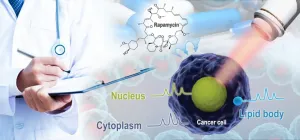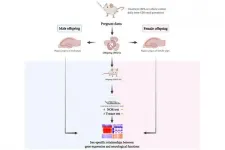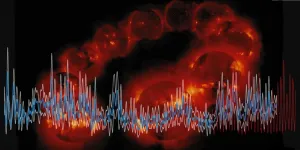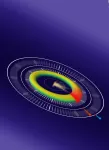ALS study reveals a unique population
Scientists discover that ALS patients in Malta do not have flaws in major ALS genes
2021-01-19
(Press-News.org) Malta, a sovereign microstate in the middle of the Mediterranean Sea, has no shortage of sunny beaches, honey-bricked villages and rugged countryside. Beyond its Mediterranean charm, Malta is home to a geographically and culturally isolated population whose unique genetic makeup, makes this island nation a goldmine for genetics research.
Four years ago, the University of Malta set up a national ALS Registry and Biobank to identify patients with amyotrophic lateral sclerosis (ALS) and collect data on their residence, occupation, lifestyle and environmental exposures. Blood samples donated by participants will remain stored in high-tech storage facilities at the University over many years.
ALS is a progressive neurological disease that destroys the nerves that interact with the body's muscles. The disease typically leads to complete paralysis of the body, robbing patients of their ability to walk, speak, eat and breathe. There is no cure for ALS, and eventually, the disease is fatal.
Malta's ALS Biobank is providing scientists with an invaluable resource for understanding the causes of ALS. In the first landmark study, researchers have retrieved and scrutinised the DNA from blood samples to discover flaws in genes linked to ALS.
"The DNA results caught us by surprise. The most frequently mutated ALS genes were flawless in Maltese patients," said the study's lead researcher Dr Ruben J. Cauchi, PhD, a senior lecturer at the University's School of Medicine and lead investigator at the University's Centre for Molecular Medicine and Biobanking.
Collaborating with scientists at the University Medical Centre (UMC) Utrecht in The Netherlands, University of Malta researchers found that ALS patients in Malta did not have flaws in the C9orf72, SOD1, TARDBP and FUS genes, which are known to contribute to a major number of ALS cases worldwide.
The study nonetheless revealed that compared to other European populations, a higher percentage of Maltese patients with no prior family history of ALS have harmful flaws in their DNA. Intriguingly, these occur in genes that are rarely damaged in Europeans with ALS.
"Our results underscore the unique genetics of the Maltese population, shaped by centuries of relative isolation. We also established that genetic factors play a significant role in causing ALS in Malta," added Dr Cauchi.
Right now, the research team is on the hunt for what triggers ALS in more than half of the study subjects that had no flaws in known ALS genes. Thanks to the participation of patients and healthy volunteers, Malta's ALS Biobank is rapidly growing into a precious treasure trove of data that is expected to unveil more fascinating insights on the causes of ALS in the years to come.
INFORMATION:
Study co-authors are Rebecca Borg, Maia Farrugia Wismayer, Dr Karl Bonavia, Dr Andrew Farrugia Wismayer and Prof Neville Vassallo from the University of Malta; Dr Malcolm Vella from Mater Dei Hospital; and Dr Joke J.F.A. van Vugt, Dr Brendan J. Kenna, Dr Kevin P. Kenna, and Prof Jan H. Veldink from UMC Utrecht.
The study was funded by the University of Malta Research Excellence Fund, an Endeavour Scholarship (part-financed by the European Social Fund), an EMBO fellowship, a Malta Council for Science & Technology Internationalisation Partnership Award, ALS Malta Foundation and the University of Malta's Research Trust (RIDT).
[Attachments] See images for this press release:

ELSE PRESS RELEASES FROM THIS DATE:
2021-01-19
With the global student community taking online courses as a result of the anti-Covid-19 measures, a study led by the University of Geneva (UNIGE) reveals that online courses deepen inequalities between gifted and less gifted students by 5%. The results of the study, which was based on data collected in 2016-2017 prior to the anti-Covid lockdown initiatives, are published in the Journal of the European Economic Association. They indicate that this learning gap between different student profiles is mainly due to their behaviour and motivation. The study gives higher education establishments worldwide practical ways to deal with lockdown or the chronic lack of space in lecture theatres, including via co-educational ...
2021-01-19
Cancer cells are smart when it comes to anti-cancer drugs, evolving and becoming resistant to even the strongest chemotherapies over time. To combat this evasive behavior, researchers have developed a method named D2O-probed CANcer Susceptibility Test Ramanometry (D2O-CANST-R) to see, at single-cell/organelle level, how pharmaceuticals induce cancer cell death and how cancer cells adapt.
The research, conducted by the Qingdao Institute of Bioenergy and Bioprocess Technology (QIBEBT) of the Chinese Academy of Sciences (CAS), was published on Jan. 12 in Analytical Chemistry, ...
2021-01-19
A new study by researchers from Chulalongkorn University, Tohoku University, and The George Washington University is the first to identify autism candidate genes that may be responsible for the sex-specific effects of bisphenol A (BPA) on the brain. It suggests BPA may serve as an environmental factor that contributes to the prevalence of male bias in autism spectrum disorder (ASD).
The research was published in the journal Scientific Reports.
BPA is widely used in many products in our daily life and abundant in micro/nanoplastics found in the environment, ...
2021-01-19
Summary
Ultra-small nanomedicines of approximately 18 nm were fabricated by dynamic ion-pairing between Y-shaped block copolymers and nucleic acid drugs, such as siRNA and antisense drugs.
Chemically modified and double-stranded oligonucleotides dramatically enhanced the stability of the ultra-small nanomedicines in the blood circulation.
The ultra-small size allows for high permeability in cancer tissues by slipping through the cracks in tumor vasculatures and stromal tissues.
Clinical trials and preclinical studies using the developed ultra-small nanomedicines are proceeding for cancer therapy.
Published in the website of Journal of Controlled Release on January 6.
https://doi.org/10.1016/j.jconrel.2021.01.001
Main body
January 19, 2021 - Kawasaki in ...
2021-01-19
The survival of pesky little flies in showers and other wet areas around the house, impervious to water droplets that may be larger than they are, comes down to more than quick reflexes. The insects have evolved a unique coating of hairs that allows them to shrug off water droplets of almost any size, KAUST researchers have shown.
Sigurdur Thoroddsen, who leads the high-speed fluids imaging laboratory at KAUST, couldn't help but take a professional interest in the small drain flies that made a home in his shower and never seemed to wash away. Thoroddsen's research focuses on multiphase flow and dynamics at air-liquid interfaces -- an environment where drain flies have found a niche, despite some risky physics.
Insects are so small that the surface tension of ...
2021-01-19
What goes on in the sun can only be observed indirectly. Sunspots, for instance, reveal the degree of solar activity - the more sunspots are visible on the surface of the sun, the more active is our central star deep inside. Even though sunspots have been known since antiquity, they have only been documented in detail since the invention of the telescope around 400 years ago. Thanks to that, we now know that the number of spots varies in regular eleven-year cycles and that, moreover, there are long-lasting periods of strong and weak solar activity, which is also reflected in the climate on Earth.
However, how solar activity developed before the start of systematic records has so far been ...
2021-01-19
Every year around 734 million tons of wheat straw are produced worldwide, a large amount of waste, which is cheap and has had no well-defined use until now. Recently, the RNM-271 Chemical Engineering and FQM-383 NANOVAL Organic Chemistry research groups at the University of Córdoba have been able to give a new use to this agricultural excess material, by using it as the foundation in order to manufacture polyurethane foams.
Also known as foam rubber, this plastic material, often manufactured from petroleum by-products, is extremely versatile within the industry and has multiple uses in the construction and automobile sectors as a sealant as well as ...
2021-01-19
An international consortium of scientists, initiated by Reinhard Kienberger, Professor of Laser and X-ray Physics at the Technical University of Munich (TUM), several years ago, has made significant measurements in the femtosecond range at the U.S. Stanford Linear Accelerator Center (SLAC).
However, on these miniscule timescales, it is extremely difficult to synchronize the X-ray pulse that sparks a reaction in the sample on the one hand and the laser pulse which 'observes' it on the other. This problem is called timing jitter, and it is a major hurdle in ongoing ...
2021-01-19
Researchers at Lund University in Sweden, in collaboration with colleagues in Dresden, Germany, have developed a way of combining a bone substitute and drugs to regenerate bone and heal severe fractures in the thigh or shin bone. The study, published in the research journal Science Advances, was conducted on rats, but the researchers think that the method in various combinations will soon be commonplace in clinical settings.
"The drugs and materials we used in the study for the regeneration of bone are already approved. We simply packaged them in a new combination. Therefore, there are no real obstacles to already using the method in clinical studies for certain major bone defects that are difficult to resolve in patients. But we want to ...
2021-01-19
The Messina Strait, a submarine bridge separating the island of Sicily from the Italian Peninsula, is the area with the largest marine litter density worldwide -more than a million objects per square kilometre in some parts-, as reported in a new review paper published in the journal Environmental Research Letters.
Also, over the next thirty years, the volume of rubbish in the sea could surpass three billion metric tons (Mt), as cited in the study, whose corresponding authors are the experts Miquel Canals, from the Faculty of Earth Sciences of the University of Barcelona, and Georg Hanke from the European Commission's Joint Research Centre (JRC), where ...
LAST 30 PRESS RELEASES:
[Press-News.org] ALS study reveals a unique population
Scientists discover that ALS patients in Malta do not have flaws in major ALS genes




